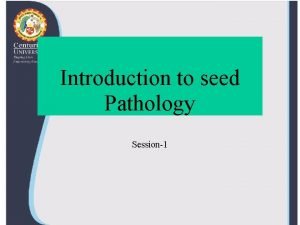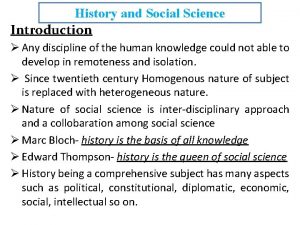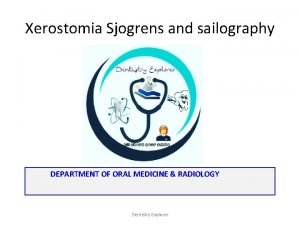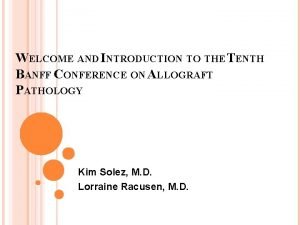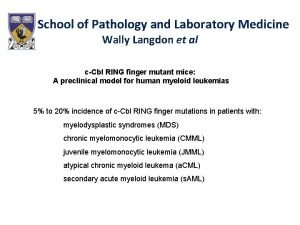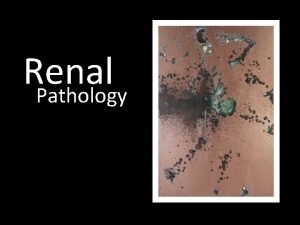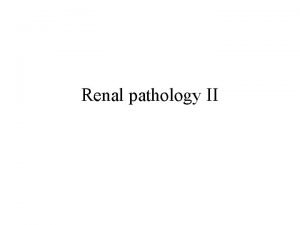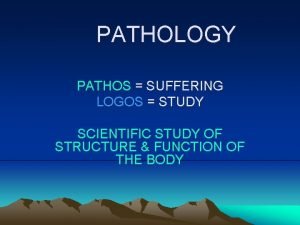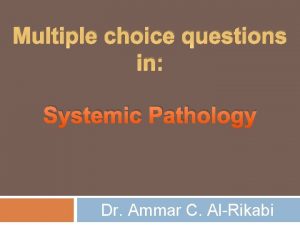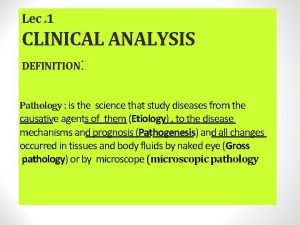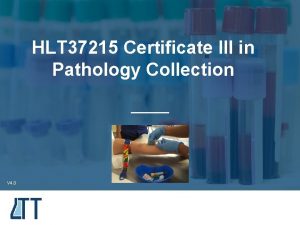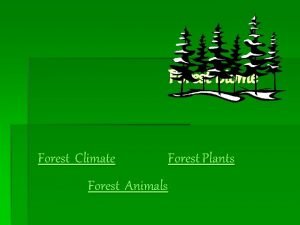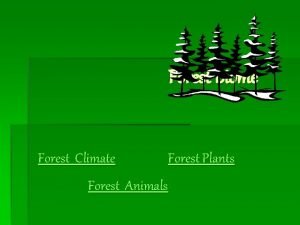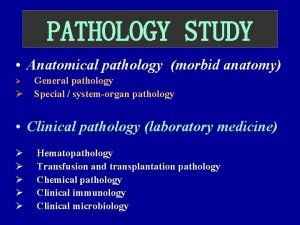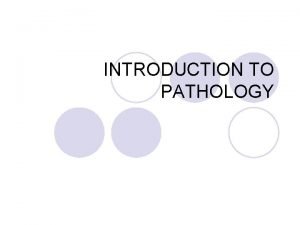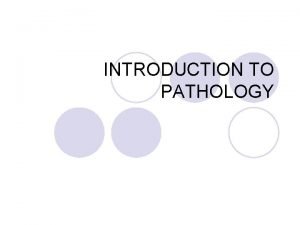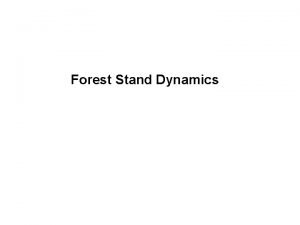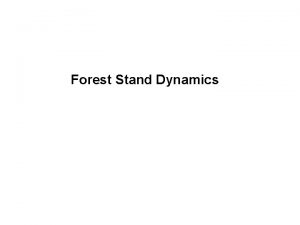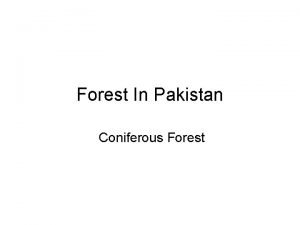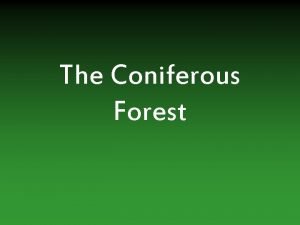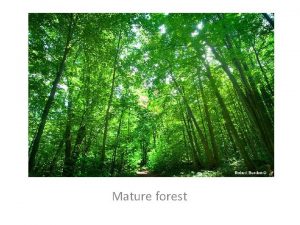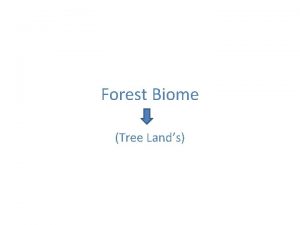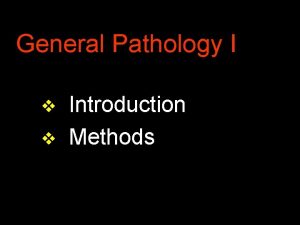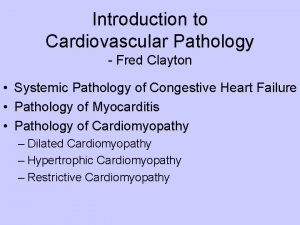Introduction to forest pathology History of forest pathology




















- Slides: 20

Introduction to forest pathology

History of forest pathology: Ø Origin from Europe Ø Beginning is epitomized by Robert Hartig (1839 -1901) Ø He is recognized as father of forest pathology Ø Investigated fungus hyphae in the decay wood

Why study tree diseases? • • • Mortality Growth reduction Reduction in quality Economic losses Cost of disease control (vs cost of doing nothing) Impact on ecosystems, food and shelter for wildlife, erosion etc. • Aesthetic value, hazards in parks • Learning about disease allows us to devise ways to control disease or minimize their impact

What are the causes of tree diseases?

The disease triangle

Losses to diseases Volume losses (M m 3/yr) Insects Diseases ____________________ Mortality 46 16 Growth reduction 19 4 Decay -25 ____________________ Total 65 45

Beneficial role of tree disease • Native diseases can play a beneficial role – Balanced relationship – Co-evolution of hosts and pathogens – Selection of the fittest tree genotypes for broad adaptability – Stand openings: favors regeneration – Wild-life habitat – Nutrient cycling – Food source (e. g. rusts, mushrooms)

Beneficial role of tree disease • Can be exploited for beneficial purposes Silver leaf disease: affects several angiosperms A biological control agent for vegetation management

Adverse effects of tree diseases • Conflict between pathogen and user’s goals • Man-made disturbances – Fire-suppression (e. g. fusiform rust in U. S. ) – Logging: stumps (e. g. heterobasidion, Armillaria), bark damage (most decay fungi) – Plantations: uniformity is unnatural and conducive to problems – Nurseries: ideal conditions to foster diseases – Climate change?

Definitions • Pathogen: organism able to cause disease • Disease: Chronic or lethal malfunctioning of one or more parts of a plant resulting from invasion by foreign organisms or from unusual environmental conditions – Results in reduced growth, malformation, loss of quality, or death – Is wood decay a disease? – Pathogen is the cause, disease is the result

Pathogen vs disease

Definitions • Saprophytes: A micro-organism living on dead organic matter (e. g. decay fungi) • Parasite: organism living on a live host for at least part of its life cycle – Obligate parasites: confined to living tissues (e. g. rusts, dwarf mistletoe, viruses) – Facultative: Able to grow and reproduce in living as well as dead tissue • Autotroph: an organism that can generate its own food (e. g. plants) • Heterotroph: an organism that depends upon the complex carbon compounds generated by the autotrophs (e. g. fungi)

Definitions • Signs: visible (macro or micro) evidence of the pathogen itself, usually reproductive structures • Symptoms: Abnormal host conditions resulting from the attack by the pathogen (e. g. resinosis, chlorosis, necrosis, hypertrophy, brooming).

Signs vs symptoms

Symptoms of tree diseases • Resinosis: production of resin in response to a stress or pathogen attack (‘pitching’); e. g. Armillaria, beetles, cankers Armillaria root disease • Chlorosis: change in leaf color (pale green to yellow) caused by a reduction in the production of chlorophyll, as a result of biotic or abiotic stresses; nutrient deficiency, root diseases, viruses Nutrient deficiency

Symptoms of tree diseases • • Necrosis: death of tissue; several foliar diseases, cankers; often caused by toxin-producing fungi Sudden Oak Death Chalara dieback on ash Black knot of prunus Brooming by Dwarf Misteltoe Hypertrophy: increase in size of organ or tissues; parasitic higher plants such as Dwarf Mistletoes; Rusts, others

Types of diseases • Abiotic – Frost, drought, nutrient stresses, toxicity – Trees can recover when agent is removed – Not « contagious » (no tree-to-tree spread); usually (but not always!) more uniform • Biotic – Caused by pathogens – Particular environmental conditions usually required for infection or disease development • Declines – General reduction in growth, leaf area, usually developping into crown dieback and eventually tree death – Caused by a combination of chronic factors

How do you determine the causal agent?

Proof of pathogenicity • Sets of rules to determine the causal agent of a disease – Pathogen must be present whenever the disease appears – Pathogen must be isolated from infected host – Pathogen must be inoculated on healthy plant of the same species to reproduce the typical symptoms – Pathogen must be re-isolated from the inoculated plants • But… – In many instances, this is not possible: obligate parasites – Environment is usually an important component of disease – Disease complexes almost impossible to reproduce Koch’s postulates, proposed by Robert Koch (1843 -1901)

Proof of pathogenicity Diseased (left) and healthy (right) pine seedlings. Note the lack of fine roots on the diseased seedling. • Pine seedlings growing in Montana-produced peat moss, showing several tall healthy plants and many stunted diseased plants.
 Introduction and importance of seed pathology
Introduction and importance of seed pathology History also history physical
History also history physical History in social science discipline
History in social science discipline Introduction to history of education
Introduction to history of education What's salvation history
What's salvation history Cherry blossom appearance in sjogren's syndrome
Cherry blossom appearance in sjogren's syndrome Define seed pathology
Define seed pathology Banff pathology course
Banff pathology course Pathology job market
Pathology job market Pathology outline
Pathology outline Sample diagnostic report for speech-language pathology
Sample diagnostic report for speech-language pathology Rph pathology
Rph pathology Bronchial wall
Bronchial wall Pyelonephritis
Pyelonephritis Kidney pathology
Kidney pathology Pathos pathology
Pathos pathology Systemic pathology exam questions pdf
Systemic pathology exam questions pdf Virtual pathology leeds
Virtual pathology leeds Definition of clinical pathology
Definition of clinical pathology Pathology branches
Pathology branches Certificate iii in pathology collections
Certificate iii in pathology collections
